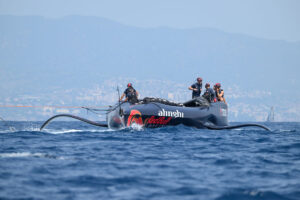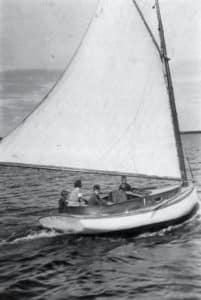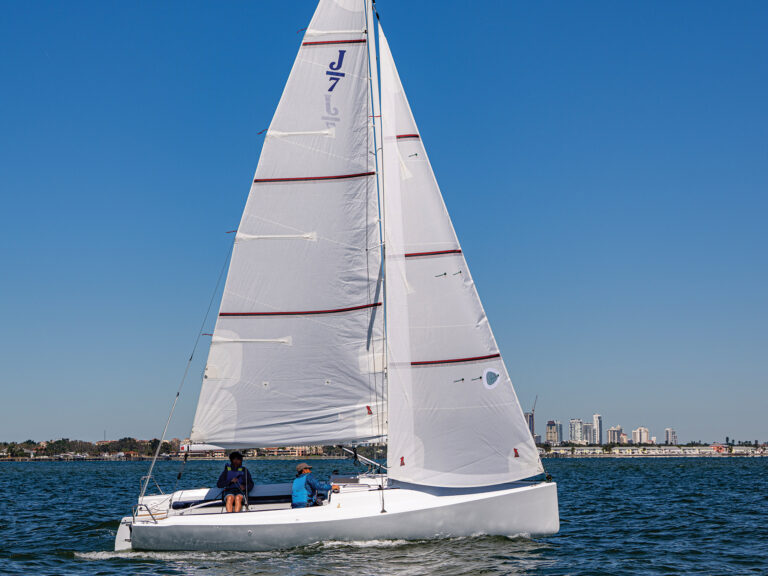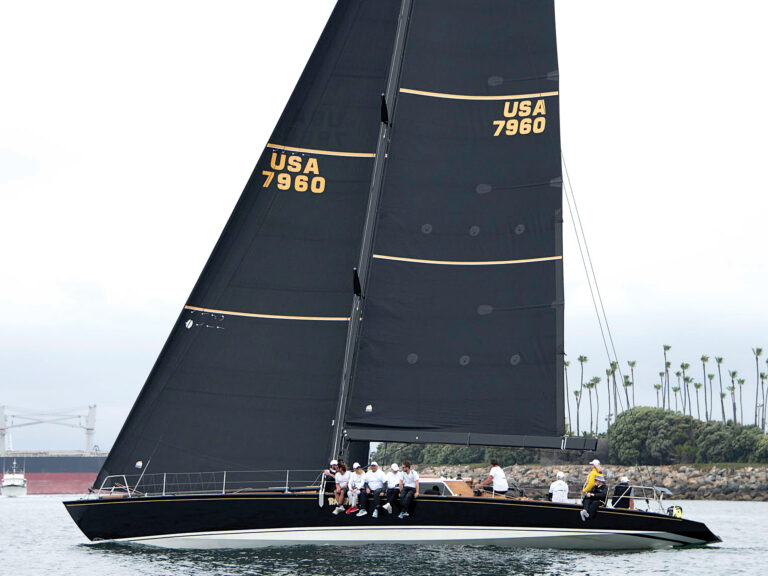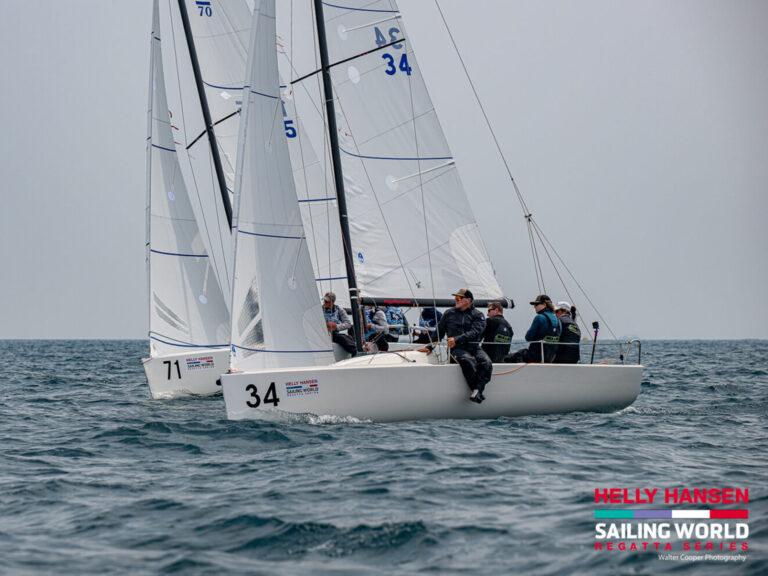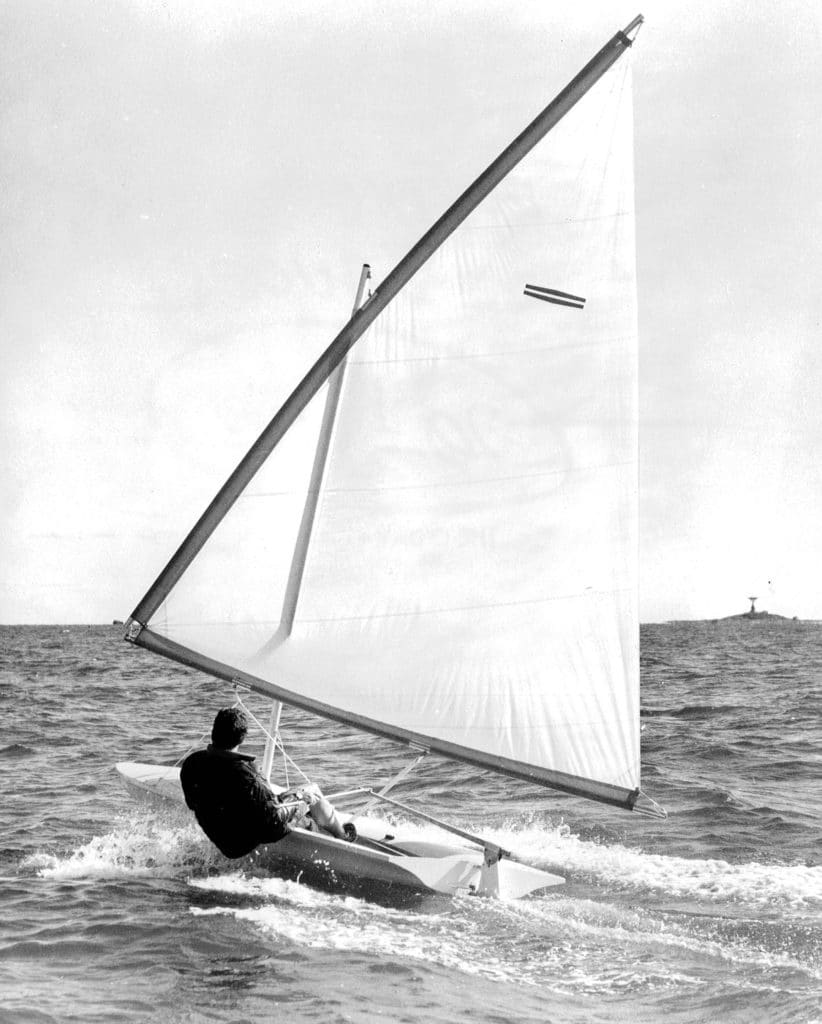
O’Day Flying Saucer
The hanging folder’s label caught my attention when I rolled open our one-design archives drawer_._
“Hmm. Flying Saucer?”
Extracting the contents, I paused at the first photo. The hull shape was striking: its winged flair reminded me of the VX One, our newly anointed Boat of the Year Award winner—funny how history repeats itself. But the boat sure looked funny with a big ‘ol lanteen rig. The next picture I found, the boat sporting a more normal looking sloop rig, made much more sense: it actually looked like it would be fun to sail. I’d never heard of the Flying Saucer, nor had I ever seen one in the flesh, so I had to find out what it was all about.
Bless the Google search, which led me to some Flying Saucer archive info (and even a one for sale (sold) on Craigslist.com), and I eventually learned its designer was Andy Kostanecki, an engineer by trade and Olympic Tempest sailor by recreation. A Facebook search then led me straight to Kostanecki.
I messaged him right then and there: “Would you discuss the Flying Saucer with me?”
He responded a few hours later, “Yes. Would love to.”
“The flying saucer was a little unusual in its day,” says Kostanecki, now living in Vero Beach, Fla. “It was a great project. I built a prototype and the all up weight was about 150 pounds, and
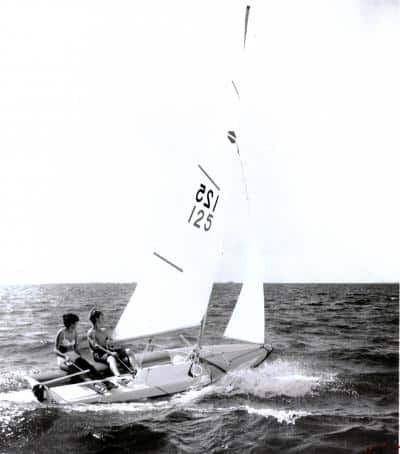
at that weight it was terrific. When O’Day built it, it was done by a bunch of teamsters who did all the layup and by the time they were done with it, it weighed 400 pounds. At 150 pounds it was a rocket ship; at 400 pounds it was a dog. In concept it was pretty good and pretty advanced, but in fact, when it got built it just didn’t work.
“I suppose, on the one hand it was optimism on my part—it would have required very judicious use of materials. I knew it would end up being heavier than 150 pounds, which was the weight of the prototype I made—from foam and fiberglass. When they started building it using chop strand and spray up, cloth, and were all finished, it was up there in weight.
“It actually did not start out with a sloop rig (at right)—it was a lateen. The supporting mast was off-center to the starboard side and came back to the center where it picked up the lateen. There was a bridle at the bottom to center the boom in the boat so the mast itself never interfered with the lateen.
“Everyone now and then I get a letter from someone who broke a rudder or something, asking me what to do to replace it…and honestly, I have no idea. There are a surprising number of people who are still enjoying it even though there was never really any organized class racing. I guess about 200 were built and they’re scattered around the country. I suppose that’s one of the benefits of being overbuilt. They’re still around today.”
Find a new “Name That One-Design” each Friday on our Facebook page.

